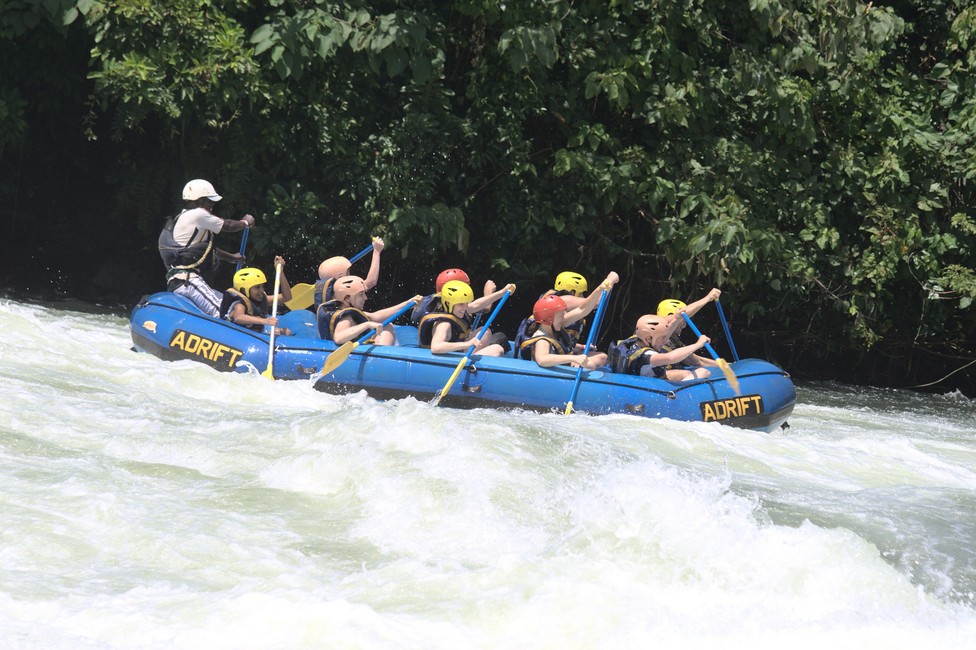Bujagali Falls
Introduction
Uganda, often referred to as the “Pearl of Africa,” boasts a diverse range of natural wonders and cultural gems, and one such treasure is Bujagali Falls. Nestled along the Nile River, they have long been a source of both natural beauty and cultural significance. In this comprehensive guide, we will take you on a journey to discover the history, ecology, adventure, and cultural heritage of Bujagali Falls, shedding light on the compelling story of this remarkable Ugandan destination.

I. The Beauty of Bujagali Falls
1. Location and Geography
Bujagali Falls is situated on the Victoria Nile, just a short distance downstream from Jinja, a vibrant town in southeastern Uganda. The location, with its lush greenery and dramatic cascades, is a visual masterpiece that has captivated travelers and explorers for generations.
2. Natural Formation
The falls were formed by a geological rift in the rocks of the Nile River, creating a series of rapids and cascades. The roaring waters, framed by the surrounding vegetation, provide a mesmerizing spectacle that is both beautiful and powerful.
II. Cultural Significance
1. The Basoga People*
The Basoga people, the local community living in the area, have a deep connection to the falls. They are not only a source of livelihood but also an integral part of their cultural heritage.
2. Traditional Practices*
For generations, the Basoga have revered the falls, incorporating them into various traditional ceremonies and rituals. The falls are believed to be inhabited by spirits, and offerings are made to seek protection and blessings.
III. Adventure and Thrills at Bujagali Falls
1. White-Water Rafting*
Bujagali Falls is a renowned hub for white-water rafting on the Nile River. Thrill-seekers from around the world are drawn to the heart-pounding experience of navigating the rapids, with Bujagali Falls as a highlight of the journey.
2. Kayaking and Canoeing*
The falls offer the ideal setting for kayaking and canoeing, allowing visitors to challenge themselves in the churning waters or take a more leisurely approach to appreciate the natural beauty.
3. Bungee Jumping*
Bungee jumping enthusiasts can experience the ultimate adrenaline rush by leaping from a platform above the falls, with the Nile River and cascades as their backdrop.
IV. Conservation Efforts and Changes at Bujagali Falls
1. Bujagali Dam Construction*
In 2012, the landscape of Bujagali Falls changed with the completion of the Bujagali Dam. The dam was constructed to generate hydroelectric power for Uganda, contributing to its energy needs and reducing the country’s reliance on fossil fuels.
2. Impact on the Environment*
The dam’s construction did alter the natural flow of the Nile River and the rapids at Bujagali Falls, leading to both positive and negative consequences for the environment and local communities.
V. The Future of Bujagali Falls
1. Sustainable Tourism*
The falls continue to be a hub for adventure tourism, offering sustainable and eco-friendly activities. Tourism contributes to the local economy, and efforts are made to balance development with conservation.
2. Cultural Preservation*
Local authorities and organizations are working to preserve the cultural heritage of the Basoga people while promoting cultural tourism around the falls.
3. Environmental Stewardship*
Environmental initiatives and conservation efforts are ongoing to mitigate the environmental impact of the Bujagali Dam and protect the surrounding ecosystem.
VI. Conclusion
Bujagali Falls is a captivating destination that marries the beauty of nature with cultural significance and adventure. While the construction of the Bujagali Dam has brought changes to the area, the falls continue to draw visitors seeking excitement, natural beauty, and a connection to the local culture. The story of the falls reflects the delicate balance between progress and preservation, making it a unique and evolving gem in Uganda’s rich tapestry of attractions.